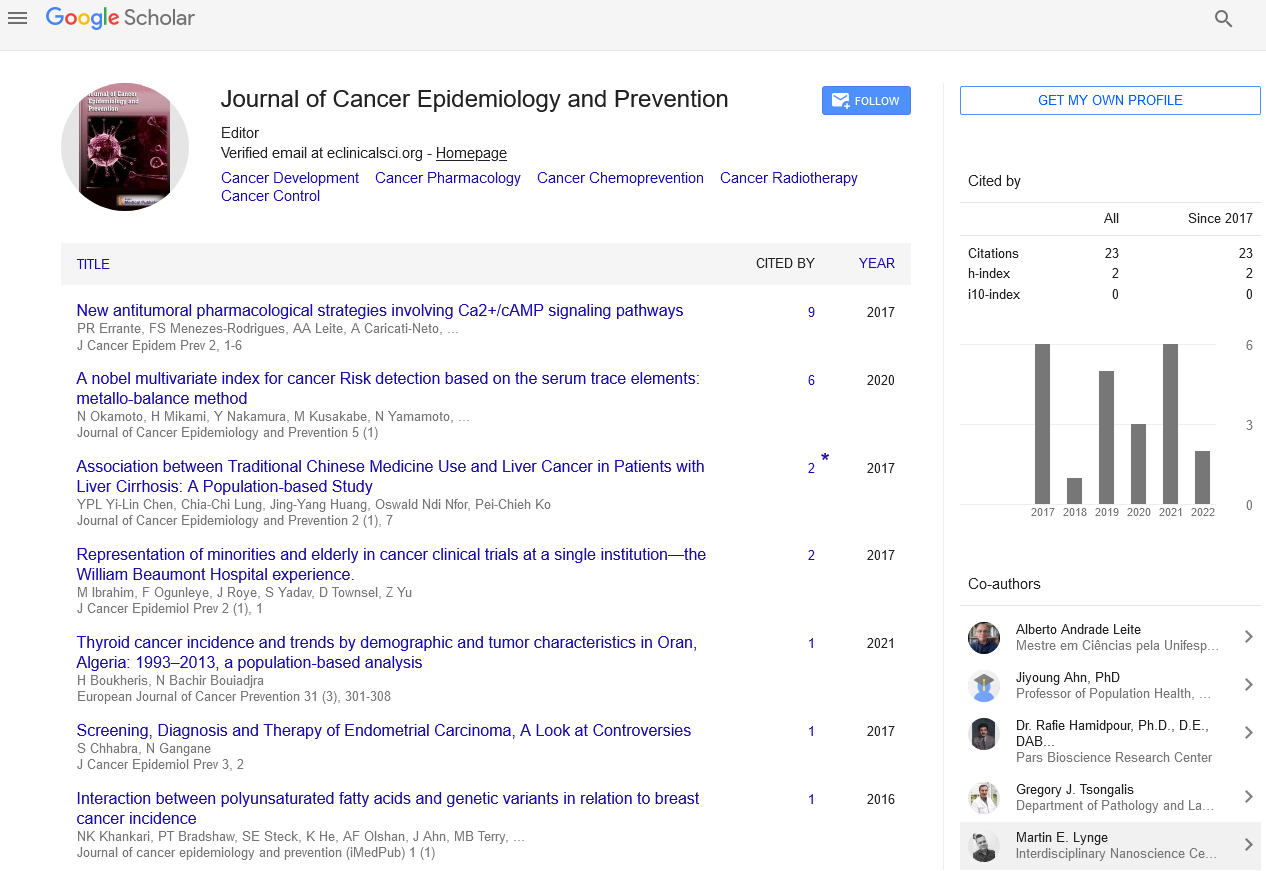William Cho*
Department of Clinical Oncology, Queen Elizabeth Hospital, Hong Kong
- *Corresponding Author:
- William Cho
Biomedical Scientist in Queen Elizabeth Hospital, Hong Kong
Tel : +852 73 93 10 10
Email: chowill@gmail.com
Received date: Jun 14, 2021; Accepted date: Jun 28, 2021; Published date: July 05, 2021
Citation: William Cho (2021) Unravel Facts and General Aspects about Leukaemia. Vol.6 No.3.5
Commentary
Cancer is a condition where the body cells Strat to grow out of
control. There are many types of cancer and leukaemia is one of
them. Leukaemia is a condition where the chemical composition
of the blood forming cells of bone marrow changes and the cells
don’t die. The leukaemia cells accumulate in the bone marrow
and occasionally fall into the bloodstream. This phenomenon
causes rise in the number of white blood cells in the bloodstream.
Through the bloodstream, leukaemia cells spread into different
organs of the body and disrupt the normal functioning of that
organ system.
There are 4 main types of leukaemia that include Acute
myeloid (or myelogenous) leukaemia (AML), Chronic myeloid
(or myelogenous) leukaemia (CML), Acute lymphocytic (or
lymphoblastic) leukaemia (ALL), Chronic lymphocytic leukaemia
(CLL).
In the early stages of leukaemia flu like symptoms arise.
Major Symptoms such as Sudden weight loss, Swollen lymph
nodes and spleen, tendency to bruise or bleed easily, bleeding
gums or nose, blood stool or urine, Susceptibility to infections,
headache, low-grade fever, mouth sores, skin rash, Bone and
joint pain, Frequent fevers and coughing.
Leukaemia occurs when there is a mutation in the DNA of blood
cells that causes uncontrolled growth, outnumbering the healthy
blood cells.
While the exact cause of leukaemia is unknown there are
certain risk factors associated with this disease. In the gender
factor men are more likely to develop leukaemia compared to
women. People within the age group of 20 years old and with
specific blood disorders such as essential thrombocytopenia
and idiopathic myelofibrosis are more susceptible. The patients
who undergo Chemotherapy for other cancer may also develop
leukaemia. Lifestyle factors such as smoking and exposure to a lot
of radiation, certain chemicals and electromagnetic fields. People
with family history of leukaemia and genetic disorder like Down
syndrome are also susceptible to leukaemia. Evidence-informed
treatments have shown a promising response to the treatment.
The treatment start with the patient administered with Radiation
therapy in low doses before initiating stem cell transplantation.
Stem cells are collected from the bone marrow of a healthy donor
and transplanted into the patient’s bone marrow. This may be
followed by chemotherapy in combination with targeted therapy
for better treatment.

